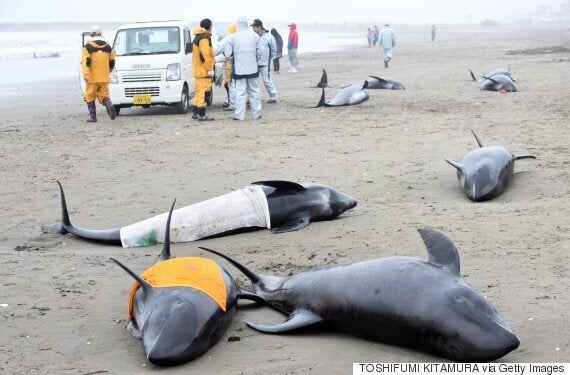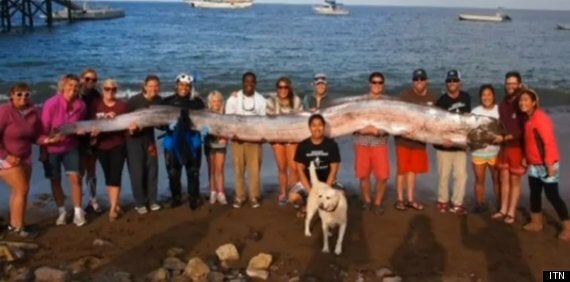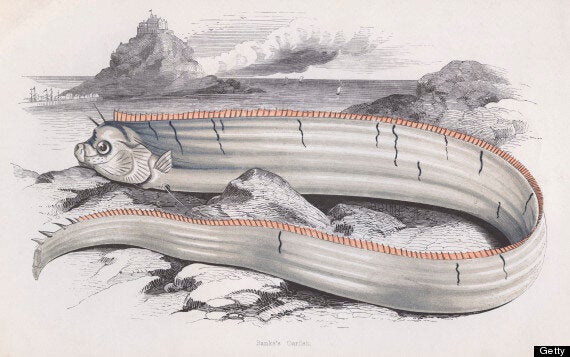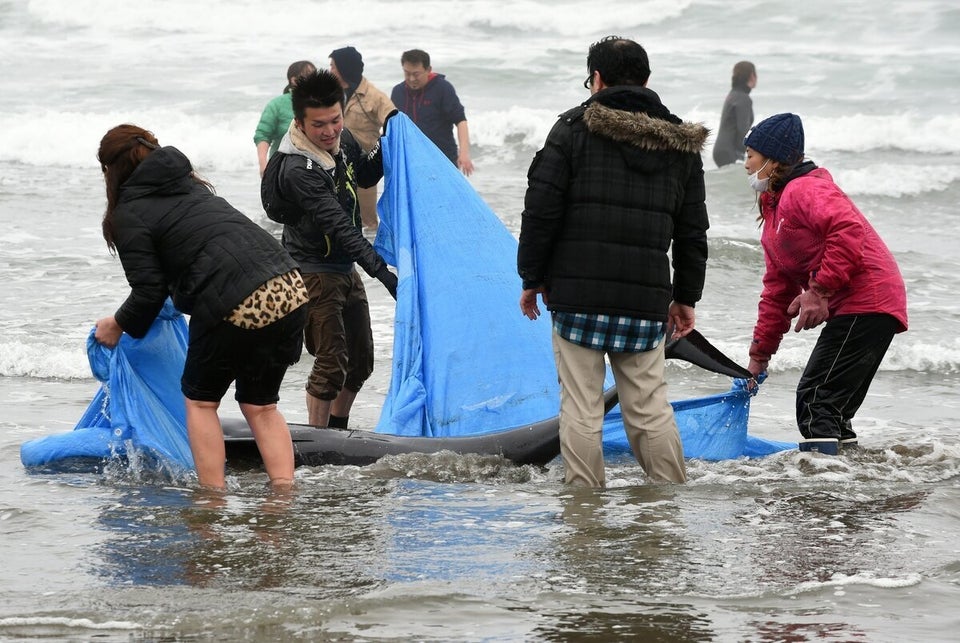A mass beaching of up to 150 dolphins on the Japanese coast has fuelled fears a powerful earthquake could be imminent.
Frantic efforts to save the melon-headed whales or blackfish – both species of dolphin - were in vain and most of the animals died on the shore of Ibaraki prefecture on Friday.
Television footage showed dozens of people carrying buckets and pouring sea water over the dolphins, or even covering them with bath towels, to keep them from drying up.

Only three of the 150 beached dolphins survived
The dolphins were wobbling and moving their fins as rescuers gently rubbed them.
Though there is little scientific evidence of a link, some online commenters have pointed out a similar mass beaching of the same species six days before the devastating tsumani of 2011 which killed some 19,000 people.
That same year more than 100 pilot whales died in a mass stranding on a remote New Zealand beach two days before a large quake struck Christchurch.
Denise Nery tweeted: “Mass death of dolphins in Japan and people are linking it to an impending earthquake. I am terribly scared.”
JV Douglas wondered: “Ominous sign to a similar case before 2011 earthquake in Japan?”
Toshiaki Kishiro, head of the Cetacean Resources Group at Japan’s National Research Institute of Far Seas Fisheries told The Telegraph he agreed the theory could be one explanation for the dolphins coming ashore, but it was just one of several possibilities.
He said: “It is possible, but there is no firm evidence to ratify that theory. This area of Japan has had many similar cases of beachings in the past, and especially of this species, so we are trying to find out why it happens.
“Another explanation that has been put forward is that the dolphins have become confused by naturally occurring magnetic fields, or that they were trying to evade other species, such as killer whales.”
Tadasu Yamada, a cetacean expert at the National Museum of Nature and Science, told Japan's NHK public television that the dolphins may have had a physiological or psychological problem and faced an unknown threat and panicked, before becoming stranded.
Scientists are unclear as to why marine animals beach themselves in large groups, with some speculating healthy whales strand themselves while trying to help sick or disorientated family members who have lost their way, AFP writes.
It adds the topography of certain places may scramble the sonar navigation of the whales, causing them to beach.

This 18-ft oarfish was found near Catalina Island
In October 2013 two specifments of the rarely seen Regalecus glesne – believed to be the largest bony fish living – were found on a Californian shoreline.
The elusive creatures, which are also known as ribbonfish, can reach up to 55 feet and weigh up to 600 pounds.

In Japan oarfish are known as Messengers from the Sea God's Palace
The fish's extreme proportions, combined with a prominent dorsal fin and undulating swimming motion, could have been the basis for ancient myths of sea-serpents.
In Japan, they are known as "Messengers from the Sea God's Palace" and are traditionally believed to be the portent of powerful earthquakes.
In March 2010, both The Telegraph and The Japan Times reported an upsurge in the number of oarfish spotted and washed up along the Japanese coast.
Coupled with the devastating quake which hit the country in April the following year, a conspiracy theory was born and continues to evolve today.
